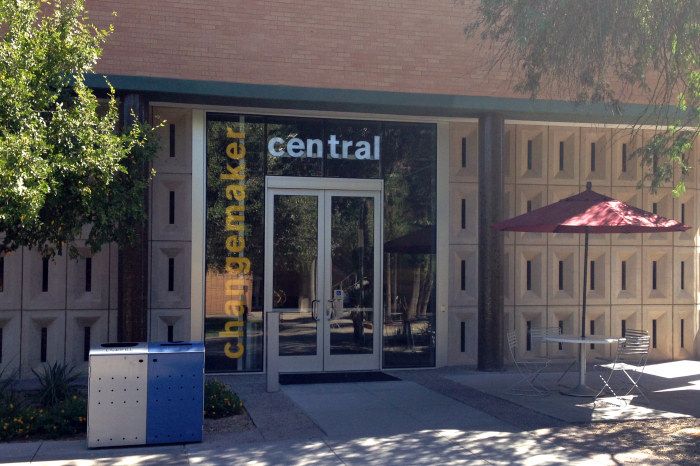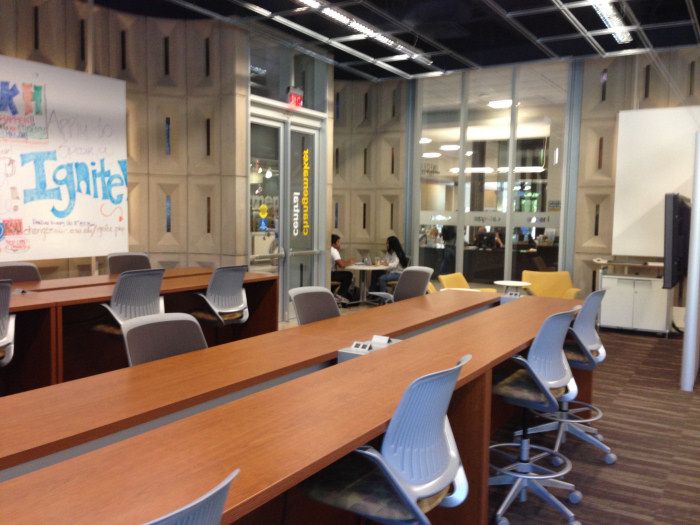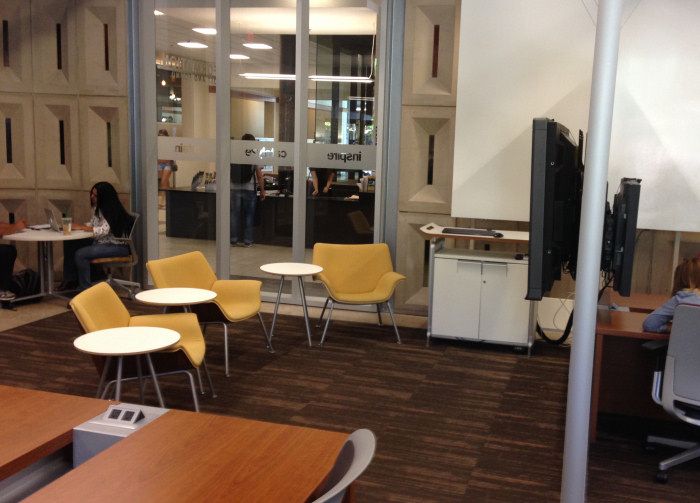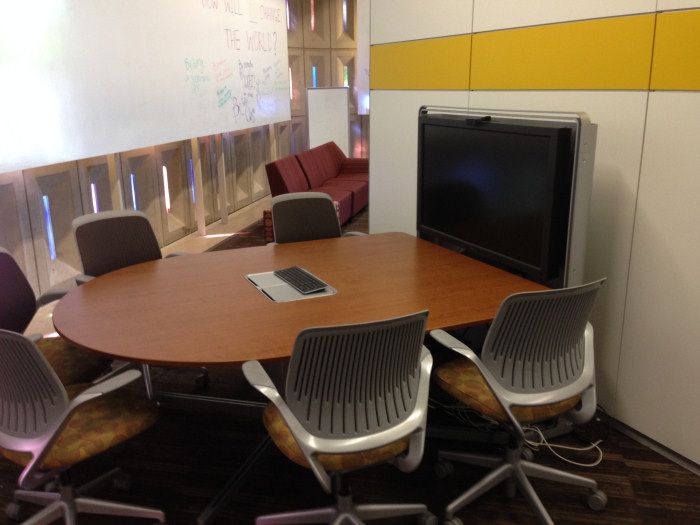This appeared to be a part of the student union, and my hopes that this might be a hub for co-working, or innovation, were not misguided. It turns out, that this is an organization that is supported by ASU, not as a curriculum, but, as an affiliated program that students can become a part of. Intiated by the organization Ashoka U, this program has become student operated and if focused on the principals of "Inspire, catalyze, sustain and high impact entrepreneurial thinking".
In the case of Changemakers, there is the space, and then there is the focus, although it is open to all students, to become a part of the organization and mission, students are required to have an interest and plan for how they intend to change the world.
Open working zone
As with many co-working environments, there are areas for group, collaborative and individual work spaces, many of which can be configured for various uses and interactions. While talking with the person who was at the desk that day, I asked how the "cafeteria" work areas were received, and she noted that they were quite popular, as they offered the ability to both work and collaborate in a desk area. She noted that this is not intended to be a library, that the point was for people to interact, to support each other in all of the projects being incubated at this location. In keeping with Ashoka, this office is tied into an entire national network of other college campuses with similar organizations. This is not a library, clearly.
Active Whiteboard
There was this area, and a second, with electronic controls and large video monitors. This one was for more active presentations, which would be local. There was a second area, more "conference-y" in feel, that also offered the large screen, but, video conferencing as well.
Reach out and touch, well, video
And then, there is the old way, which is to provide some couches, old tech whiteboards, fun colored markers and to encourage the play of ideas, and the creation of relationships as these students begin to feel out their message and path to making an impact on the world.
It sound ridiculous, and it sounds grand, to think that students who are still in the process of getting their degrees, might think that they are going to go out there and change the world. But, what of those that succeed, and if there is a way to create an intellectual environment, where changing the world is not separate, not some 'whacko communist' ideal, but, a real, honest and doable construct, who better to dream up those pathways, than students who have yet to come to understand what can, and cannot be done. The heart of creating an innovation ecosystem lies in the ability to catalyze and enable the young people, who will inherit this planet and all of it's cultural, social, and environmental limitations and potentials, into action, to make their own future.
I can't help but wonder, what if we started with the high school kids, what if we challenged them to become leaders, and not recordings of some Wiki-esque world. What is San Leandro found a way to create activists, philosophers, makers, and leaders, from it's own children.




No comments:
Post a Comment